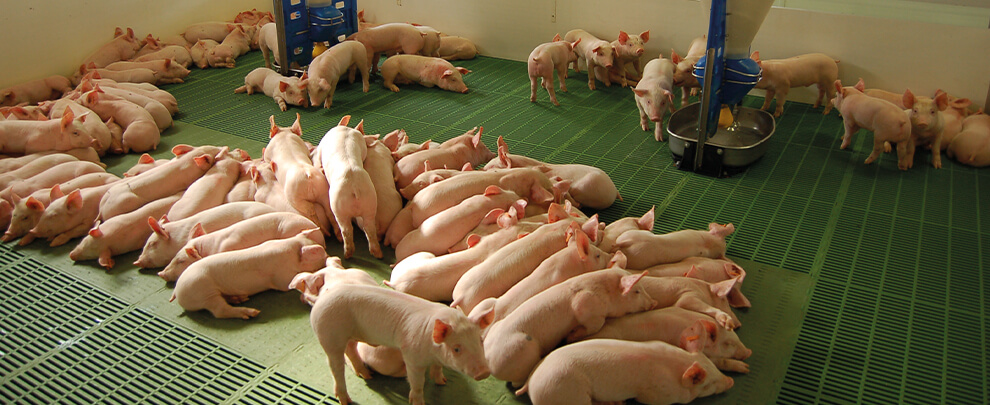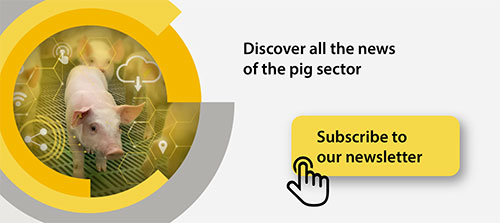Blog
Blog

Key aspects of climate control during the weaning phase
30th April 2025 - News
Marcel Weiss Hoffmann. Munters Sales Area.
The weaning phase, which marks the transition from nursing to independent feeding, is a critical period in pig production. Proper climate control in weaning facilities is essential to ensure the health, growth, and welfare of piglets, to prepare them for feed intake, and to help them reach their full potential throughout the production cycle. The variety of climates and environmental conditions around the world presents unique challenges in maintaining an optimal environment for piglets. Effective management of temperature, humidity, and ventilation systems has a significant impact on the success of a pig farm during this phase. This article explores key aspects of climate control in weaning facilities, highlighting the economic benefits and return on investment (ROI) associated with these systems. Furthermore, it emphasizes the importance of planning, selecting appropriate equipment, and the role of trained professionals in the design and maintenance of efficient climate systems.
The importance of climate control in weaning
Climate control in weaning facilities is a fundamental aspect of pig production. The environment in these facilities directly affects the health, comfort, and performance potential of piglets. Poor climate management can lead to stress, disease, and poor growth rates, negatively affecting farm profitability. Weaned piglets are particularly sensitive to their environment. Their thermoregulatory systems are still developing and require carefully controlled conditions to thrive. Maintaining the right balance of temperature, humidity, and air quality is essential for their health and growth. Without an optimal environment, feed intake may decrease, growth rates may slow, susceptibility to disease may rise, and mortality rates may increase.
Temperature regulation
Temperature control is a key factor in climate management during weaning. Piglets have a specific thermoneutral zone, typically between 28 and 32°C during the early phase, which gradually decreases as they grow. Maintaining this range is essential for proper growth and development.
- Cold stress: If the temperature falls below the thermoneutral zone, piglets expend energy to maintain body temperature, reducing the energy available for growth. Cold stress can weaken the immune system, increase disease susceptibility, and result in uneven weight gain within the group. Piglets are especially sensitive to cold stress.
- Heat stress: High temperatures can cause heat stress, reducing feed intake and compromising growth performance. Heat stress may also increase respiratory rates, making piglets more vulnerable to respiratory diseases.
Efficient heating and cooling systems, such as radiant heaters and evaporative cooling systems, are essential for maintaining optimal temperatures and minimizing thermal stress.
Ventilation and air quality
Proper ventilation is another critical component of climate control during weaning. Ventilation systems remove excess heat, humidity, and harmful gases such as ammonia and carbon dioxide, while ensuring a consistent supply of fresh air.
Effective ventilation prevents the buildup of harmful gases and reduces the risk of respiratory issues. Strategic placement of air inlets and exhaust fans is crucial to ensure even airflow and to avoid hot or cold spots within the facility. A well-designed ventilation system maintains the ideal balance between fresh air supply and indoor environmental conditions, ensuring that piglets remain comfortable and healthy.
Economic benefiits of climate control
Investing in climate control systems in piglet facilities is not only vital for animal welfare but also brings significant economic advantages. These benefits include improved growth performance, reduced mortality rates, and enhanced operational efficiency.
- Improved growth performance: Proper climate control ensures piglets remain within their thermoneutral zone, allowing them to convert feed into body weight more efficiently. Better growth rates result in heavier, healthier pigs at the end of the rearing phase, shortening time to market and increasing profitability. The benefits carry into the next production phase, enhancing the entire value chain.
- Reduced mortality rates: Effective climate management reduces stress and disease risk, leading to higher survival rates. Lower mortality means more piglets reach the fattening stage.
- Lower veterinary costs: A well-controlled environment reduces the incidence of respiratory and climate-related illnesses, decreasing the need for treatments and veterinary expenses.
- Energy efficiency: Modern climate control systems are designed to optimize energy use, incorporating sensors and automation to adjust heating, cooling, and ventilation according to environmental needs. This can result in significant long-term energy savings, lower environmental impact, and a better return on investment.
Returon in investment
While the initial cost of climate control systems can be substantial, when properly implemented, the long-term economic benefits outweigh the initial investment. Improved piglet performance, lower feed conversion ratios, reduced veterinary costs, and energy savings all contribute to a positive ROI.
For instance, maintaining an ideal climate during the weaning phase enhances feed efficiency, lowering feed costs and increasing weight gain. Reduced mortality and improved health outcomes further boost profitability by increasing the number of healthy pigs entering the fattening phase. Over time, these factors make investing in climate control systems a financially sound decision.
Planning and equipment selection
Achieving effective climate control in weaning facilities requires detailed planning and the use of appropriate equipment. Factors such as pen design, construction materials, local climate, and management practices all play a role in determining system efficiency. There is no one-size-fits-all solution.
Consulting with trained professionals ensures that the climate control system is tailored to the specific needs of each facility. Experts can recommend the correct type and placement of ventilation systems, heating and cooling equipment, and sensors, maximizing system effectiveness. Additionally, selecting durable and energy-efficient equipment contributes to long-term cost savings and operational efficiency.








